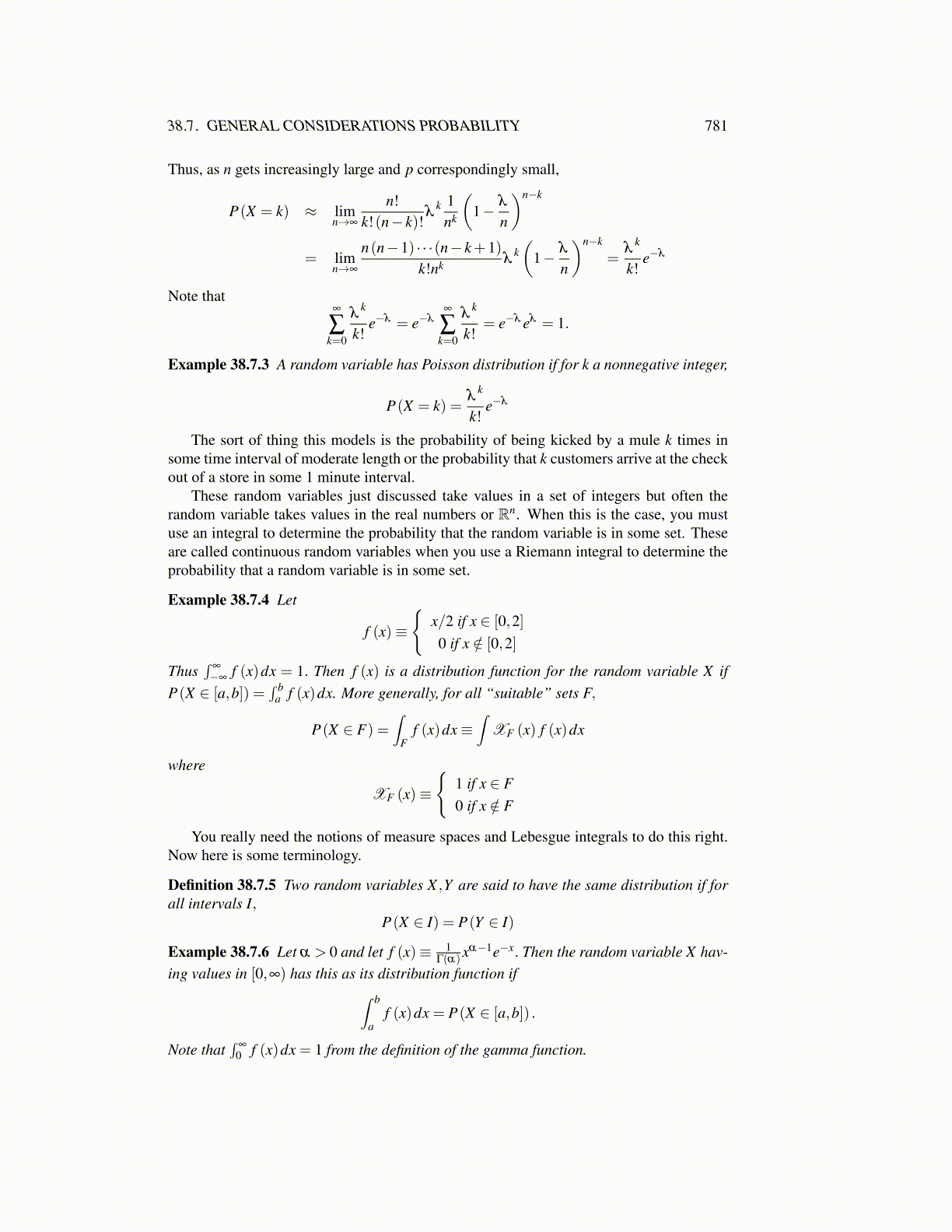
38.7. GENERAL CONSIDERATIONS PROBABILITY 781
Thus, as n gets increasingly large and p correspondingly small,
P(X = k) ≈ limn→∞
n!k!(n− k)!
λk 1
nk
(1− λ
n
)n−k
= limn→∞
n(n−1) · · ·(n− k+1)k!nk λ
k(
1− λ
n
)n−k
=λ
k
k!e−λ
Note that∞
∑k=0
λk
k!e−λ = e−λ
∞
∑k=0
λk
k!= e−λ eλ = 1.
Example 38.7.3 A random variable has Poisson distribution if for k a nonnegative integer,
P(X = k) =λ
k
k!e−λ
The sort of thing this models is the probability of being kicked by a mule k times insome time interval of moderate length or the probability that k customers arrive at the checkout of a store in some 1 minute interval.
These random variables just discussed take values in a set of integers but often therandom variable takes values in the real numbers or Rn. When this is the case, you mustuse an integral to determine the probability that the random variable is in some set. Theseare called continuous random variables when you use a Riemann integral to determine theprobability that a random variable is in some set.
Example 38.7.4 Let
f (x)≡
{x/2 if x ∈ [0,2]0 if x /∈ [0,2]
Thus∫
∞
−∞f (x)dx = 1. Then f (x) is a distribution function for the random variable X if
P(X ∈ [a,b]) =∫ b
a f (x)dx. More generally, for all “suitable” sets F,
P(X ∈ F) =∫
Ff (x)dx≡
∫XF (x) f (x)dx
where
XF (x)≡
{1 if x ∈ F0 if x /∈ F
You really need the notions of measure spaces and Lebesgue integrals to do this right.Now here is some terminology.
Definition 38.7.5 Two random variables X ,Y are said to have the same distribution if forall intervals I,
P(X ∈ I) = P(Y ∈ I)
Example 38.7.6 Let α > 0 and let f (x)≡ 1Γ(α)xα−1e−x. Then the random variable X hav-
ing values in [0,∞) has this as its distribution function if∫ b
af (x)dx = P(X ∈ [a,b]) .
Note that∫
∞
0 f (x)dx = 1 from the definition of the gamma function.